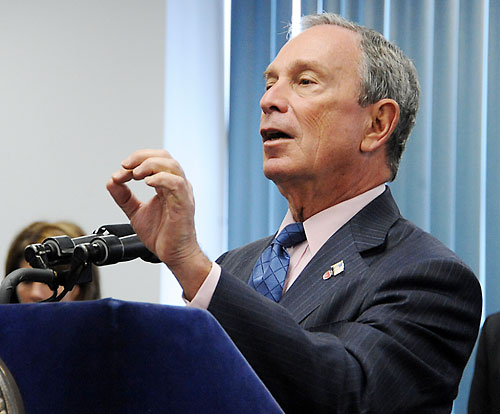This week’s debate over term limits reminds us anew why it is so important to investigate, review, question and generally be a burr in the saddle of our elected officials and non-public newsmakers. The reason? Put bluntly, they quite often lie (as Mayor Bloomberg did earlier this year when he said he had no intention of seeking a third term).
That’s why an informed public, with the help of newspapers like this one, must insist on honesty. Indeed, our last few issues have shown how important that job is:
• On this week’s front page, we report that state transportation and development officials claim that repairs to the Brooklyn–Queens Expressway will not affect the long-delayed Brooklyn Bridge Park waterfront development — but a 2007 report by federal engineers reveals that the construction will endanger the park. State officials suggest, Wizard of Oz-style, that we should “pay no attention” to the experts’ report because in a few years, the park will be built (voila!) and then the highway planners will figure out how to re-route 160,000 daily vehicles somewhere else.
The public would be far better served by knowing — now — how that will be done.
• Two years ago, we started asking questions about a city financing scheme that allows developers like Bruce Ratner to avoid property taxes — which rise as land value increases — and instead make “Payments in Lieu of Taxes” that are typically much lower than real property taxes. The Internal Revenue Service looked into it and, lo and behold, ruled that such PILOTs do, indeed, scam taxpayers. The Treasury Department this week threw out the use of PILOTs — but exempted Ratner’s Atlantic Yards because it had preliminary government approval in July, 2006.
Preliminary approval? If that’s the case, why did thousands of people line up on three hot summer nights in August of that year to testify against the project? The answer is clear: those public hearings were a sham.
And lest we forget, when the basketball arena at the heart of Atlantic Yards was unveiled in 2003, Ratner promised that it would cost $400 million and be financed privately, a flat-out lie that was enabled by our elected officials, but challenged by this newspaper. Lo and behold, the cost of the arena is now $950 million — and it will be built entirely by public money. Your money.
• We’ve raised questions about plans for a Whole Foods supermarket at the corner of Third Avenue and Third Street, specifically about traffic and why the market would need a huge 420-car parking lot. Well, it turns out that a supermarket is only the beginning of the retailer’s plan. Now that its project has stalled because of a downturn in the economy, Whole Foods says it will bring in an outside developer and perhaps build something much larger — something that was never part of the public debate.
A shopping mall on the edge of Park Slope would have a major environmental impact and endanger local businesses. Is it wrong to ask questions about it? We think not.
• We’ve repeatedly asked why the Bloomberg Administration feels it must rezone Coney Island’s amusement area from its current “amusement only” zoning to “park land.” City officials told us that such “park land” zoning would protect Coney’s amusement area better than the “amusement only” zoning — but on further investigation, city officials admitted that virtually anything can be built on “park land.” As a result, the mayor’s “park land” rezoning is hardly an insurance policy for Coney’s future as “the people’s playground.” The city plan calls for buying land — at a cost of tens of millions of taxpayer dollars! — rezoning it, and then turning it over to a hand-picked developer. And what happens when that developer comes back and says the revenue projections have fallen short? Thanks to “park land” zoning, the city could allow that developer to build a hotel or anything else. So much for an amusement-only zone!
• When we asked Long Island College Hospital why it needed to close its maternity, pediatrics and obstetrics departments, the hospital’s parent company told us that the medical facility was in dire financial straits and that amputating the divisions was the only option. But our investigation turned up the hospital’s own audit from 2006, which gave a clean bill of fiscal health, and then a 2007 audit that predicted catastrophe. It strains credibility to believe that the hospital went from secure to suicidal in one year. Indeed, if the hospital had been known to be in such serious risk of collapse, elected officials in Albany or Washington could have rushed in to save it. So LICH’s owners, Continuum Health Partners, hid its alleged crisis until nothing could be done. Is it because they want to close the hospital and sell off its assets? We’ll keep asking.
Reporters and editors are sometimes criticized for exhibiting a general mistrust of elected officials and other newsmakers. But as the history above bears out, these “leaders” need to be watched — and seriously questioned — every step of the way.

























